|
|
|
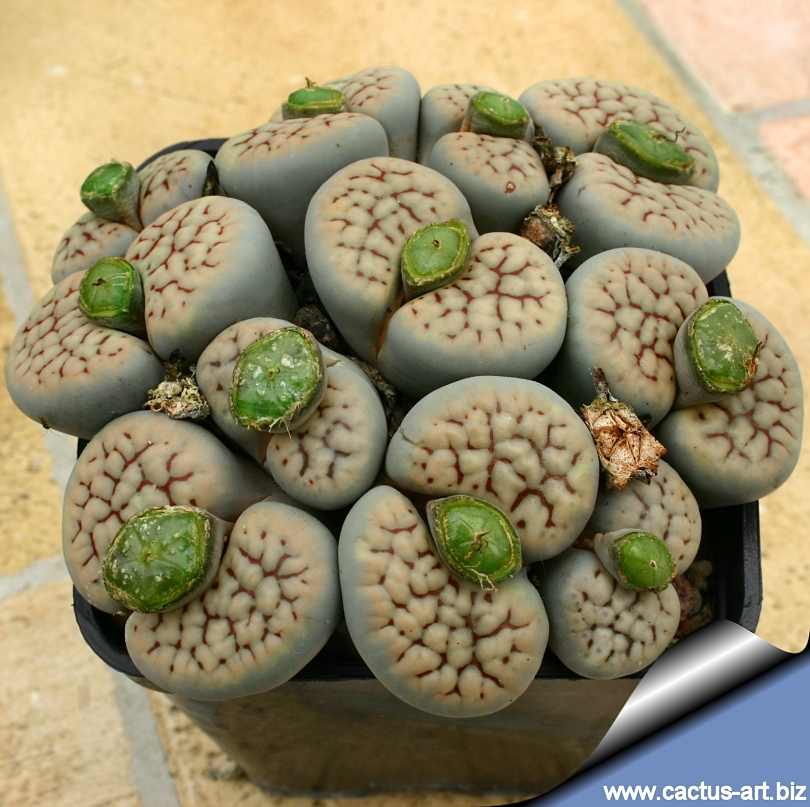
Distinctive plant with very flat grey top and dark lines.
(Photographed a month after flowering with developing unripe green
fruits)
|
|
Cultivation: Need an open
mineral, fast draining mix and the maximum amount of light you are able
to give them. The basic cultivation routine is: Stop watering after
flowering. Start watering after the old leaves completely dry. (Usually
late March or Early April) Water freely during the growing season, soak
the compost fully but allow it to dry out between waterings. Some
growers fertilize frequently, some hardly ever. Keep them dry during the
winter. Nearly all problems occur as a
result of overwatering and poor ventilation
especially when weather conditions are dull and cool or very humid.
|
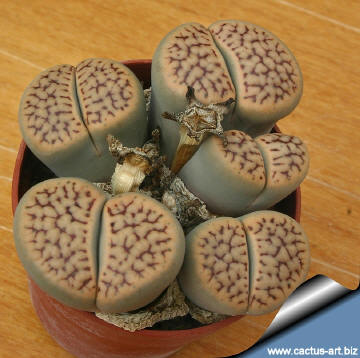 |
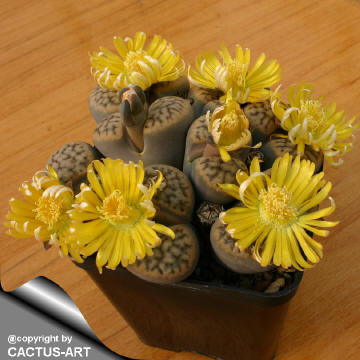 |
|
In the
winter
season the plant doesn’t need
watering, but they will still be
growing, the new
bodies will be increasing in size as the old outer
leaves begin to shrivel. In fact the plant in this time extracts
water and
nutrient stored in the outer
succulent leaves, allowing them to
dehydrate relocating the water to the rest of the plant and to
the new leaves that form during this period until the old leaves are
reduced to nothing more than "thin papery shells".
|
|
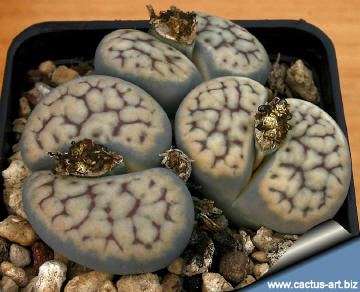 |
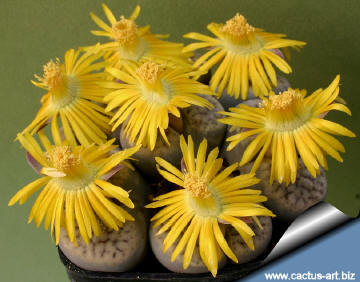 |
|
|
|
|
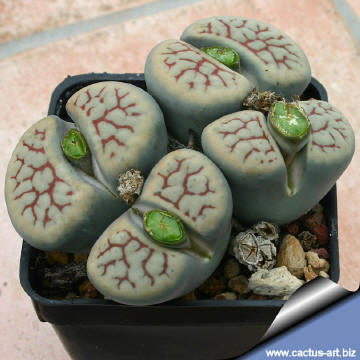
|
Photo of conspecific taxa, varieties, forms and cultivars of
Lithops
shwantesii


|
|
Advertising
|
|
|
|
Family: Mesebrianthemaceae (Aizoaceae)
Scientific name: Lithops
schwantesii var. urikosensis
(Dint.) H.W. de Boer & B.K. Boom (1928) (form:
"nutupsdriftensis")
Origin: Namibia
Etymology:
The species name 'schwantesii' comes from Gustav
Schwantes (1881-1960), German professor of prehistory at Kiel
University, and Mesemb specialist. (Aizoaceae)
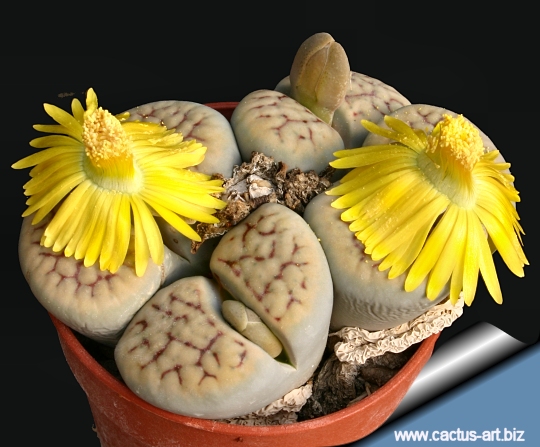
Flowers are yellow.
|
|
|
|
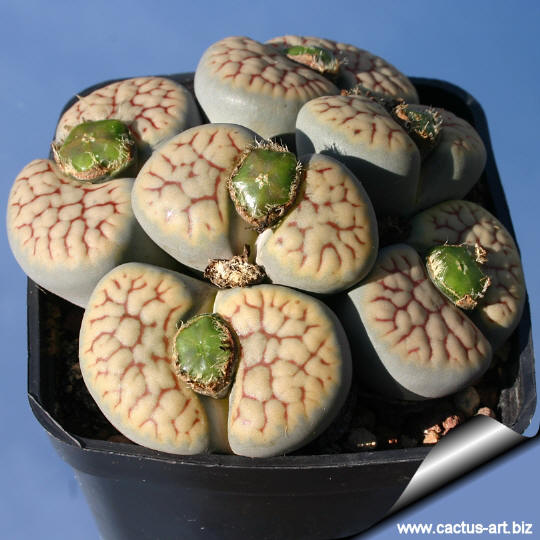
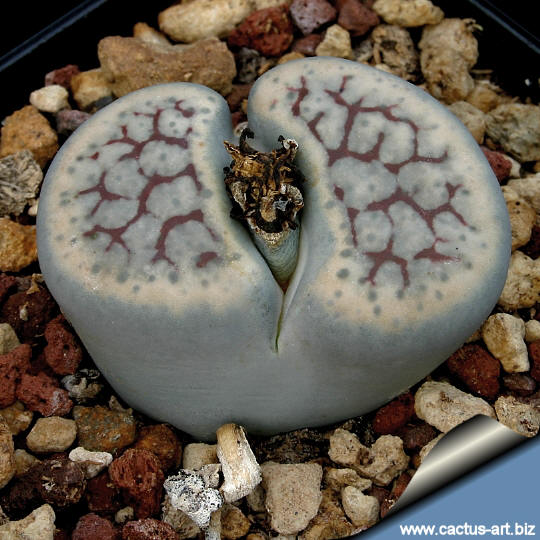
The surface patterns and colouring varies from plant to plant
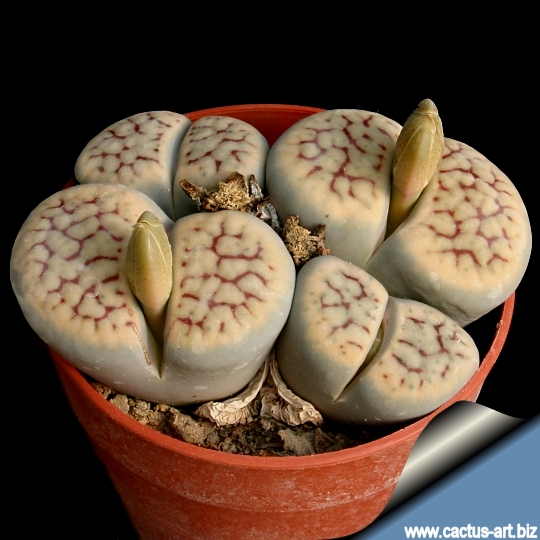
Buds. |
|